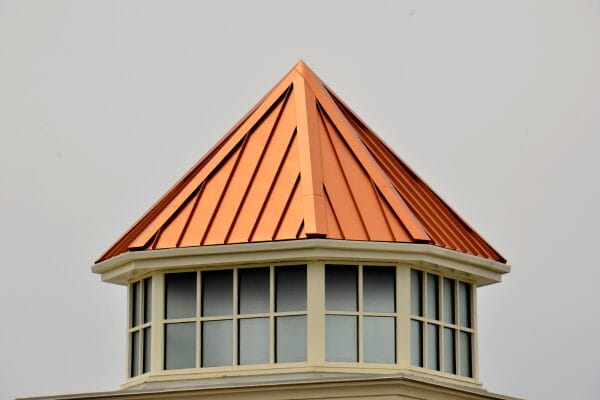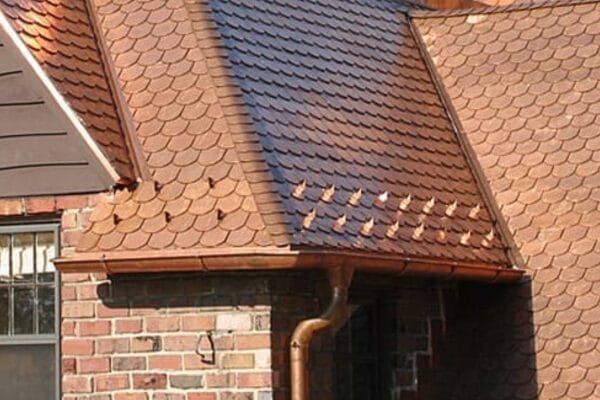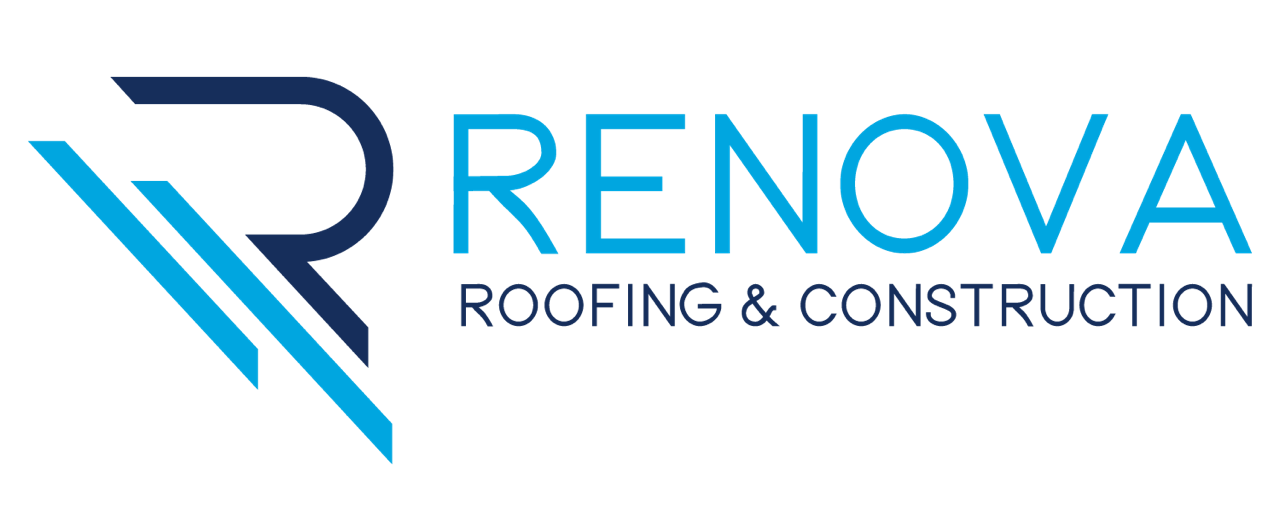Installing a copper roof is a bold and decisive move that can significantly transform the aesthetics and functionality of your roof. If, like other homeowners living in the Gulf Coast region, you are also looking to install a durable material on your roof, then you probably have considered a copper metal roof. Despite its high initial cost, it’s an investment that pays off through a variety of benefits.
But since it’s a decision that involves a major financial investment, you should take your time to research critical factors about the material and installation. So get ready as we discuss the five pivotal things to know before installing a copper roof.
What Is A Copper Roof?
A copper roof is a type of roofing system that uses intricate sheets or shingles of copper as the primary roof covering. These metal roofs bring timeless beauty to every property they adorn. Copper has been used in roofing for centuries and can be seen on all types of buildings from castles to modern business buildings. Due to their durability and elegant look, they are becoming more and more popular among homeowners. Copper roofs also change colors over time, known as patina. They get a cooler, green hue that makes each roof have a unique pattern and color palette.
In the next section, we will discuss different styles, advantages vs. disadvantages, costs, and the installation process to help you understand why investing in this timeless material might be the best decision for your roof replacement project.

Top 5 Things to Know Before Choosing a Copper Roof
It’s important to fully understand a roofing material for making a final decision, so here are five things to consider about copper roofs:
#1 Different Styles of Copper Roofs
If you are a proactive homeowner, you know that roofing materials come in diverse styles and materials. Specifically for copper roofs, there are two main options: standing seam roofing panels and shingles.
Standing Seam Copper Roofs
The elegance of standing seam copper panels makes them a popular option for homeowners eyeing to upgrade their roof. However, it’s essential to understand what this particular style entails before making any decisions.
Standing seam copper roofs feature long, vertically oriented panels that interlock with raised seams or joints. These distinctive seams provide an elevated level of water-resistance and robust protection against adverse weather conditions. Moreover, the neat vertical lines add a touch of architectural charm, lending them a sleek, modernistic look or a classic traditional allure depending on other aspects of your home’s exterior design.
However, it’s important to note that standing seam copper roofs can be more complex to install if your home has a complicated roof design. Therefore, make sure to work with seasoned professionals to ensure effective installation and protect against issues like leaks down the line.
Copper Roofing Shingles
Now let’s move our focus onto the second type: copper roof shingles. If you’re looking for something besides conventional asphalt shingles but still want the classic appearance they offer – then you’re in luck! Copper shingles have similar characteristics to other regular shingle-style coverages but with an added benefit of durability and a longer lifespan.
Initially, copper shingles are almost twice or three times as expensive than regular asphalt ones. But they have very long lifespans, sometimes outlasting the people living in the house!
#2 Advantages of Copper Metal Roofing Systems
Let’s delve into what makes copper roofing systems such an excellent choice for homeowners.
Durability and Longevity of Copper Roofs
One of the standout advantages of copper metal roofs is their exceptional durability. Copper doesn’t corrode or suffer significant damage when exposed to the elements. Plus, copper roofs typically last more than a century, which is much longer than most other roofing materials out there, only slate comes close!
Aesthetic Appeal and Unique Appearance
Another remarkable aspect of copper roofing systems is their unique aesthetic appeal. If you install a copper roof, you will be blown away by its elegance and timeless beauty that raise your home’s curb appeal.
Over time, the bright, shiny surface gradually turns into a stunning blue-green patina, giving your property an old-world charm. Other than roofs, copper accents are also getting quite popular, and you can consider them for your home.
Also Read: 5 Reasons Why Copper Rain Gutters Are The Ultimate Home Investment
Environmental Benefits of Copper Roofs
Copper roofs offer notable environmental benefits, making them a sustainable roofing option worth considering. Metals such as aluminum, steel, and copper are highly recyclable, even at the end of their extensive lifespans. Additionally, the manufacturing processes for copper roofing panels and shingles often involve recycled materials, reducing the environmental impact associated with production.
In today’s world, where sustainable construction practices are gaining importance, choosing materials like copper can help efficiently use resources and decrease landfill waste.
Energy Efficiency and Cost Savings
Copper metal roofing systems stand out for their energy efficiency. Their reflective properties help maintain a cool home interior during hot summer months by reflecting rather than absorbing the sun’s heat.
This feature reduces the need for excessive air conditioning, leading to energy cost savings. Studies suggest that homeowners can save up to 40% on annual energy costs with a metal roof like copper.
#3 Disadvantages of Copper Metal Roofs
Copper, despite its many attributes, presents a few inconveniences that might give pause to prospective buyers. Now since we promised a fair analysis, let’s delve into these limitations of copper roofing systems.
High Initial Cost of Installation
This is the most common reason why homeowners decide against a copper roof. Given copper’s status as a premium material known for durability and aesthetic appeal, it goes for top dollar on the market.
Installing this kind of roofing system is quite an investment. Don’t be surprised if the sticker price seems high at first glance, it tends to be pricier than other options in the Gulf Coast. But it’s important to consider this a reflection of copper’s quality – it’s an investment that will pay off over time.
Please note, while costs may vary according to factors such as your location and the complexity of the installation process, investing in a copper roof can actually save you money on repairs and replacement in the long run.
Noise During Rainfall
The second pitfall you may want to consider when contemplating installing a copper roof is its acoustic properties, particularly during rain or hail storms. Copper roofs can create more noise compared to their counterparts made from other materials. The pattering sound produced by rain drops hitting your roof can be delightful for some but potentially aggravating for others.
It is also possible to reduce weather-related noise effectively through various insulation techniques during installation—another reason why hiring experienced professionals can truly pay off!
#4 How Much Does a Copper Roof Cost?
The installation cost for a copper roof is just one critical component for homeowners considering this roofing option.
Factors That Influence the Cost of Copper Roofs
In evaluating the cost implications tied to copper roofing systems, many factors come into play. Allow me to break it down for you:
- Quality and Thickness of the Copper Material
- Roof Design
- Market Price of Copper Panels or Shingles
- Local Labor Rates in the Area
- Size of the Roof
- Complexity of the Roofing System
We have covered the details about how much a copper roof costs in another blog post: How Much Does A Copper Roof Cost In 2024?

#5 Copper Roof Installation Process
Here are the key steps that roofing contractors typically follow when installing a new copper roof:
Assessment and Preparation:
Roofing contractors begin with a thorough assessment of your home’s structure and roof design. This step includes measuring roof dimensions, evaluating the pitch, considering adjacent components like chimneys or skylights, and ensuring compatibility with the existing roofing system. Preparation involves removing old roofing materials and assessing the strength of supporting structure.
Installing Underlayment:
After initial preparations, installation begins with the placement of an underlayment, a water-resistant layer typically made of felt paper or synthetic materials, on the roof deck.
Panel Fabrication and Installation:
Standing seam copper roofing panel or shingles, based on your chosen style, are crafted and carefully installed on the underlayment. Starting from the bottom up, each panel or shingle overlaps its neighbor, creating a watertight barrier against leaks.
Securing Flashings and Finishing Details:
Customized flashing, thin pieces of metal, are securely installed around roof protrusions like chimneys or vents to prevent leaks. Sealants are applied strategically to enhance overall weather-resistance.
Also Read: The Anatomy Of A Roof: Understanding How Each Part Functions
While these steps outline the basics, every property has unique requirements that may call for adjustments to this process.
Install a Copper Roof with the Help of the Best Roofing Company in the Gulf Coast
If you decide a copper roof is right for you, it’s important that you work with certified roofing professionals with experience handling metal roofing systems. Installing copper metal roofs isn’t a DIY project and should be entrusted to skilled experts for a successful and long lasting outcome.
Renova Roofing & Construction is a premier roofing contractor serving Mississippi, Alabama, and Louisiana. Apart from copper roofs, we also install other types of metal roofs and asphalt shingles. Contact us today at (601) 647-3433 to book a free consultation with our experts.

